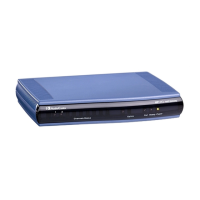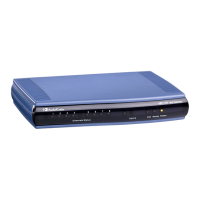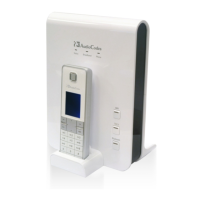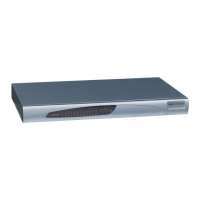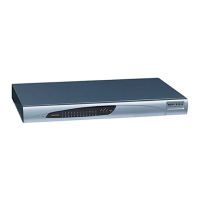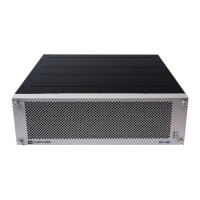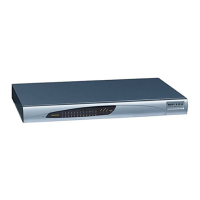CHAPTER57 Reporting Information to External Party
Mediant 1000 Gateway & E-SBC | User's Manual
● Media CDRs: This CDR is published for each active media stream, thereby allowing
multiple media CDRs, where each media CDR has a unique call ID corresponding to the
signaling CDR. There are three different CDR Report Types (CDRReportType), which are
sent to the CDR server at different stages of the SIP dialog session:
◆ "MEDIA_START": CDR is sent upon an INVITE message.
◆ "MEDIA_UPDATE": CDR is sent upon a re-INVITE message (e.g., the established
call is placed on hold by one of the call parties).
◆ "MEDIA_END": CDR is sent upon a BYE message (i.e., call ends)
The CDR Report Types for SBC media and the SIP dialog stages are shown in the
following figure:
Figure 57-1: SBC CDR Report Types for Media
● Signaling CDRs: This CDR contains SIP signaling information. A typical SBC session
consists of two SBC legs. Each leg generates its own signaling CDRs. Each leg
generates three different CDR Report Types (CDRReportType), which are sent to the
CDR server at different stages of the SIP dialog:
◆ "CALL_START": CDR is sent upon an INVITE message.
◆ "CALL_CONNECT": CDR is sent upon a 200 OK response (i.e., call is established).
◆ "CALL_END": CDR is sent upon a BYE message (i.e., call ends)
The CDR Report Types for SBC signaling and the SIP dialog stages are shown in the
following figure:
Figure 57-2: CDR Report Types for SBC Signaling
CDRs belonging to the same SBC session (both legs) have the same Session ID (SessionId
CDR field). CDRs belonging to the same SBC leg have the same Leg ID (LegId CDR field)
For billing applications, the CDR that is sent when the call ends (CALL_END) is usually
sufficient and it may be based on the following CDR fields:
● Leg ID
● Source URI
● Destination URI
- 979 -
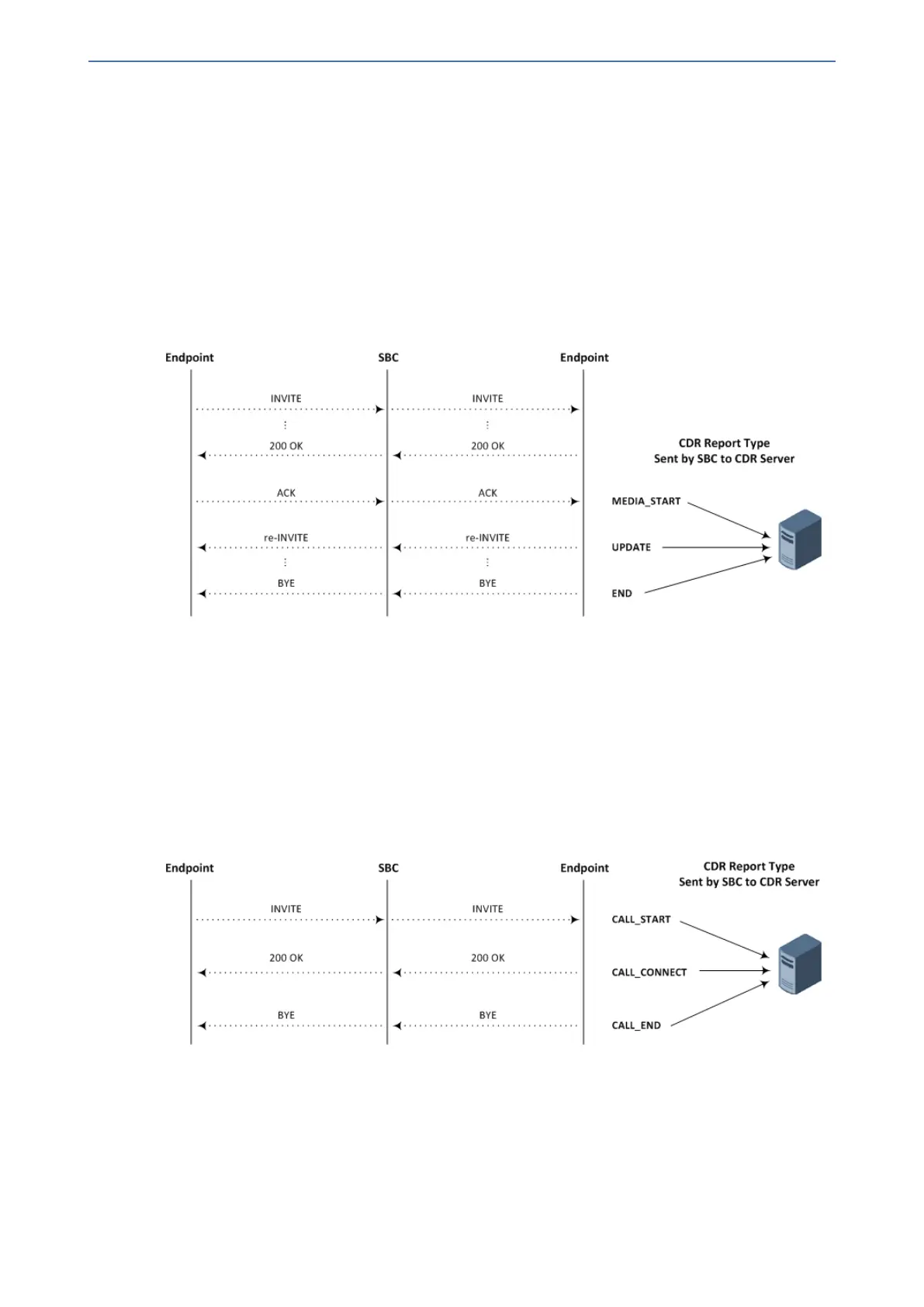